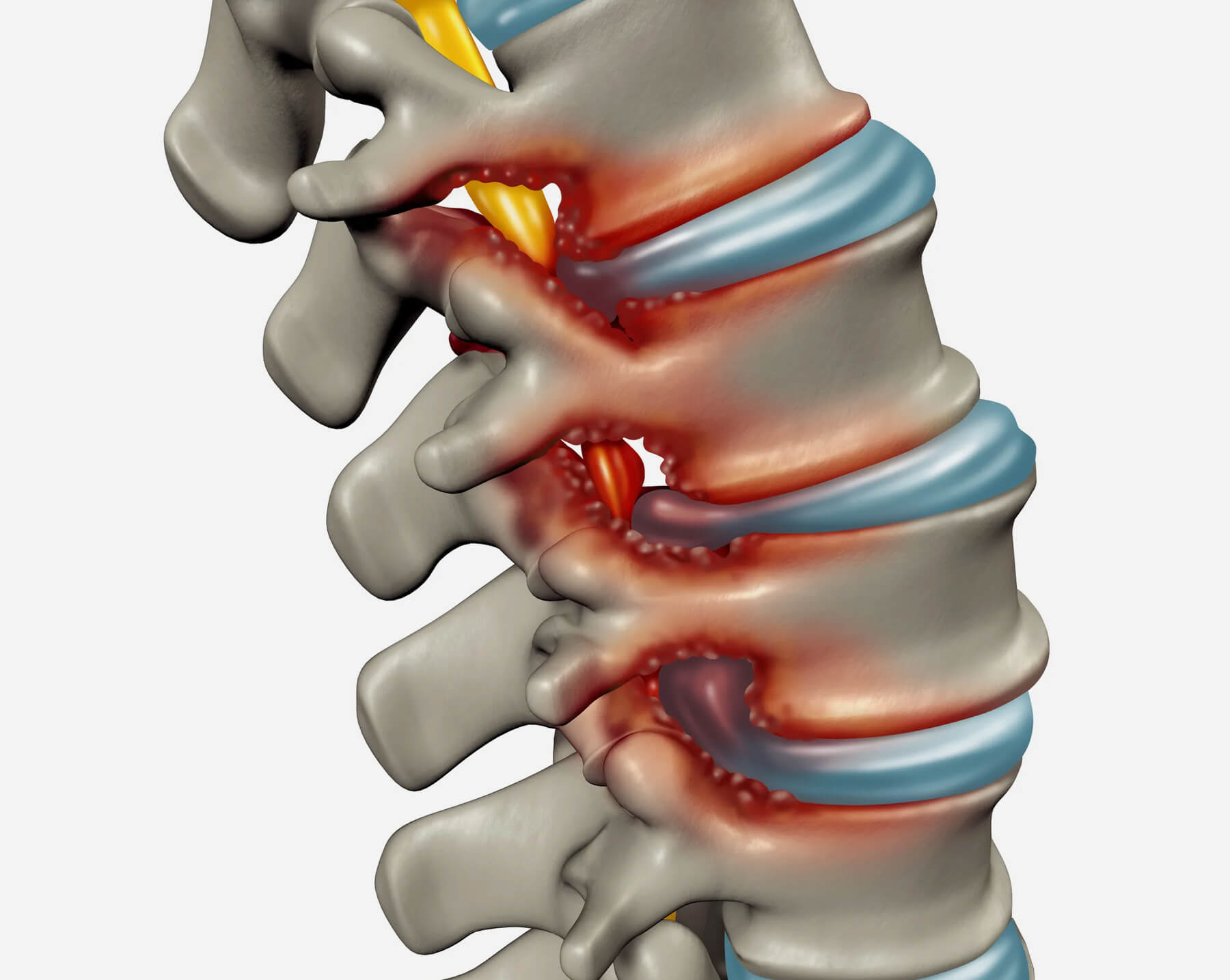

Our ServicesThoracic Canal Stenosis
When we think of spinal issues, conditions like lumbar or cervical stenosis often come to mind. But nestled between these two regions lies the thoracic spine-an area that, though less frequently affected, can be the site of a serious condition known as Thoracic Canal Stenosis.

What is Thoracic Canal Stenosis?

Thoracic canal stenosis refers to the narrowing of the spinal canal in the mid-back (thoracic) region, which can put pressure on the spinal cord. The thoracic spine comprises 12 vertebrae (T1 to T12) and serves to stabilize the upper and mid-back while protecting the spinal cord.
Unlike cervical and lumbar stenosis, thoracic stenosis is relatively rare due to the stability of the thoracic spine—thanks to its connection to the rib cage. However, when it does occur, it can cause significant neurological problems if left untreated.
When conservative  care needs
care needs
a specialist’s touch.
touch.
Causes of Thoracic Canal StenosisSeveral factors can contribute to the narrowing of the thoracic spinal canal:
Degenerative disc disease: Wear and tear over time can lead to disc bulges or herniations that compress the spinal cord.
Ossification of the ligamentum flavum (OLF): Thickening and hardening of the ligament can encroach on the spinal canal.
Congenital stenosis: Some individuals are born with a naturally narrow spinal canal.
Trauma: Fractures or dislocations in the thoracic spine can result in compression.
Tumors or cysts: Abnormal growths in or around the spine may lead to narrowing.
Arthritis: Bone spurs due to osteoarthritis can press into the canal.
Symptoms to Watch ForSymptoms of thoracic canal stenosis typically develop gradually and can often be mistaken for other conditions. Key signs include:
Mid-back pain or discomfort
Numbness or tingling in the torso or lower extremities
Weakness in the legs
Difficulty walking or maintaining balance
Bowel or bladder dysfunction (in severe cases)
Spasticity or stiffness in the legs
Because the thoracic spinal cord directly affects lower body functions, any compression here can significantly impair mobility and quality of life.
DiagnosisTimely and accurate diagnosis is essential to prevent permanent nerve damage. A thorough approach may include:
Physical examination
Neurological assessment
MRI (Magnetic Resonance Imaging) to assess soft tissue and spinal cord compression
CT scan for detailed bone imaging
X-rays to detect spinal alignment issues or degenerative changes
Treatment Options
Treatment depends on the severity of the stenosis and the degree of spinal cord compression.01.
Conservative Management
- Medications: Pain relievers, anti-inflammatories, or muscle relaxants
- Physical therapy: To improve strength and mobility
- Epidural steroid injections: In some cases, to reduce inflammation
However, conservative treatment may be limited in thoracic stenosis due to the higher risk of spinal cord damage.
Surgical Treatment
Surgery is often recommended for moderate to severe cases. Common procedures include:
- Laminectomy: Removal of part of the vertebra to relieve pressure
- Decompression surgery: Especially in cases of ossification
- Spinal fusion: If spinal instability is present
Surgical outcomes are generally favorable if performed before irreversible spinal cord damage occurs.
Living with Thoracic Canal StenosisEarly intervention and lifestyle adjustments can help manage symptoms and prevent progression. Tips include:
Maintaining a healthy weight to reduce pressure on the spine
Staying active with spine-safe exercises
Avoiding heavy lifting or high-impact activities
Regular follow-ups with a spine specialist
Final Thoughts
Though thoracic canal stenosis is rare, its potential impact on the spinal cord makes it a serious condition that should not be overlooked. If you or someone you know experiences unexplained mid-back pain, numbness in the lower limbs, or changes in walking or bladder control, consult a neurologist or spine surgeon immediately.
Early diagnosis and treatment are key to preserving mobility and quality of life.

